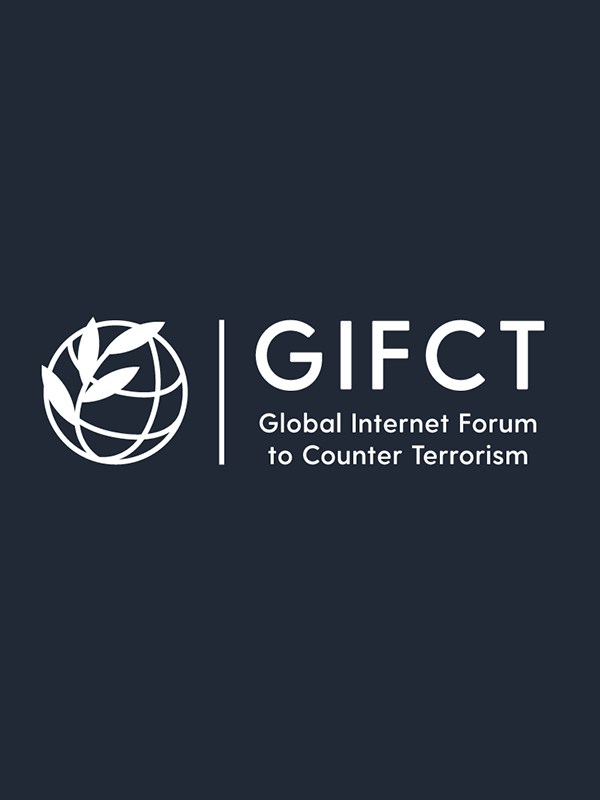This document serves as a guide for civil society groups, academic researchers, governments, and other tech companies wanting to know more about the resources and information that GIFCT member companies make available about their efforts to counter terrorist and violent extremist activity and tools developed to combat forms of online radicalization.
In each section we have linked directly to resources on each topic developed by GIFCT member companies as well as resources from GIFCT and its partners at the Global Network on Technology and Extremism (GNET) and Tech Against Terrorism.
To begin, this document maps each company’s efforts that fulfill the GIFCT membership criteria. These are criteria that all tech companies must have publicly in place before being considered for GIFCT membership. First, companies must have public platform standardsthat explicitly prohibit the promotion of terrorism and/or violent extremism in their terms of service, community guidelines, or other publicly available content policies. This first section explores how companies discuss their frameworks for prohibiting the use of their platforms by terrorist and/or violent extremists.
The second section of this document links to member companies’ Transparency Reports. All GIFCT member companies must publish transparency reports on at least an annual cadence. While we have seen larger GIFCT member companies continue to develop more granular and robust transparency reports, the initial development of such a report can be the most daunting piece of the GIFCT membership criteria for smaller companies.
The third section covers the safety portals and wider safety information that platforms make available so that their users are aware of the range of tools they can use to stay safe. Safety information is particularly crucial for activists, academics, journalists, and users that might be vulnerable to violent extremist groups. On some platforms, this information includes how to report hacked accounts, how to better ensure privacy in your account set-up, and how to flag abuse and harassment to the company.
The fourth section reviews the ways that GIFCT members ensure they have the ability to receive and act on reports of illegal activity or activity violating their terms of service from their users.This is also a GIFCT membership requirement. Reporting capabilities include internal flagging tools, reporting portals, and outreach emails. These mechanisms vary across platforms based on how they operate. Whatever form it takes, it is important to ensure that the community using a platform can highlight abuses to that company that might be missed by any proactive detection efforts.
We know that content removal alone addresses a symptom and not the root causes of radicalization leading to violence. The fifth section of this document highlights resources related to GIFCT’s membership criteria to support the capacity of civil society organizations to challenge violent extremism. Under this remit, some of the larger social media companies have developed international counter-narrative programs and tooling to help activists and NGOs scale and optimize their voices online as part of their efforts to push back on hate speech and extremism.
While community standards, transparency reports, safety outlets, and reporting guidance work to define and disallow certain types of content and activities on a given platform, we know that content removal alone addresses a symptom and not the root causes of radicalization leading to violence. The fifth section of this document highlights resources related to GIFCT’s membership criteria to support the capacity of civil society organizations to challenge violent extremism. Under this remit, some of the larger social media companies have developed international
The final sections of this document highlight preventative measures to counter extremism online, specifically, digital literacy training and tooling. We have included, where available, open-access resources related to digital literacy along with relevant resources that guide activists and NGOs on how to utilize advertising and marketing tools to optimize the reach of their campaigns to their target audiences and how they can measure these efforts.
For ease of use, the appendix gives all the resource links in one comprehensive table by company, theme and URL link. GIFCT hopes that this document will serve as a useful resource and guide for better understanding and joint efforts in combating terrorism and violent extremism online.



